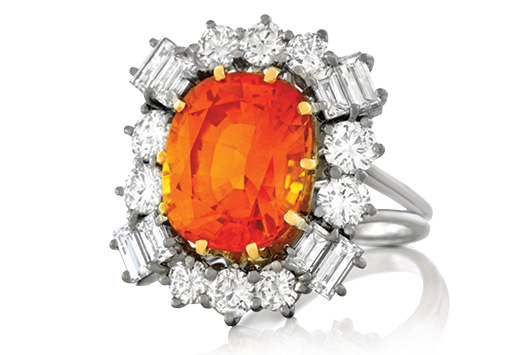 What inherent value does a name bring to a piece of estate jewelry?
What inherent value does a name bring to a piece of estate jewelry?
Signed pieces from important houses sell for more than their identical counterparts because signature adds value. The higher-end the piece is, the more value the name adds. Lesser signatures add curb appeal, which makes the jewelry easier to sell but does not really add to value. Lower-end branded material resells for lower-end prices. However, in the estate market, branded and signed jewelry are only a small percentage of total sales.
What is the best mix to have for an estate jewelry department?
Most estate goods that are sold are priced based on quality — of the stones, of the fabrication and of the design. They might have signatures, but often this jewelry is made by good makers who are not necessarily familiar names to customers. Buying good-quality and exceptional pieces along with important names like Tiffany & Co., Cartier, and Van Cleef & Arpels makes a good mix.
What is the best way to sell jewelry without a well-known name?
I sell all jewelry the same way: Qualify what the client is looking for, then point out the features and benefits of the item. I tell the story of the piece, letting the customers fall in love with it and decide to buy. I point out the finer elements of a piece in a way the customer can appreciate; selling beauty by illuminating substance works for me.
A name is only one component of value that comes into play when a customer decides to buy a piece of jewelry, and some clients may not wish to pay extra for it. If a client is attracted to a certain piece, then it is my job to assess the level of their interest and how well the jewel fits into their life. Once our conversation has established that this jewel is meant for them, I can point out the design features (beauty), rarity, aesthetic, and finally quality of the goods and make.
There is an aspirational aspect to estate jewelry. Something that is intrinsically beautiful can make customers happy to own and wear it. A piece with a story to tell offers its own appeal.
For instance, the iron French Chanticleer ring, circa 1780, is a great example of something that is 100% aesthetic and rare but not a signed piece, nor does it have intrinsic value. It was the kind of ring that a prosperous craftsman would have bought and worn in the 18th century. It is in brilliant condition, strongly French in design, and offers a glimpse of another age. Add all this together and you have strong desirability. It sold for several thousand dollars.
Estate dealers are all treasure hunters, searching out the best the market has to offer. Knowledge is king. Finding or recognizing the pieces that don’t have the more obvious assets of big diamonds or gorgeous sapphires but do have rarity and a storied history is one key to a successful business.
Image: Lawrence Jeffrey Estate JewelersArticle from the Rapaport Magazine - June 2020. To subscribe click here.